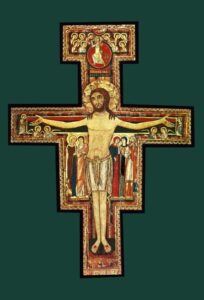Basics of Prayer
Forms of Prayer
Vocal Prayer
Prayers said out loud — usually “scripted” with words already provided.
Examples: Our Father, Hail Mary, Glory Be, Memorare, Rosary, etc.
Pros: Contains thousands of years of ancient wisdom and tradition, communal in nature.
Cons: Can become superficial or disengaged from the heart if done out of pure habit.


Meditative Prayer
Internal and less “scripted” yet still with structure and a focal point. Mind and imagination are engaged in a deeper way.
Examples: Reflecting on scripture (lectio divina), the rosary (meditating on each mystery), reflecting on holy writings of saints or Church Fathers.
Pros: Allows the mind to seek deeper understanding of God’s revealed truths.
Cons: Finding passages to reflect on might be an obstacle. Desiring even more union than what the practice of meditation brings.
Contemplative Prayer
Silent union with God. Seeking the “one whom my soul loves” (Song of Solomon). Open prayer yet still centered on Christ.
Examples: Repetition of sacred words, scripture verses, or focusing on holy images.
Pros: The highest form of prayer that seeks greatest intimacy and union with God.
Cons: Can be “too open” and difficult to achieve — especially if other forms of prayer are not first practiced and done comfortably.

